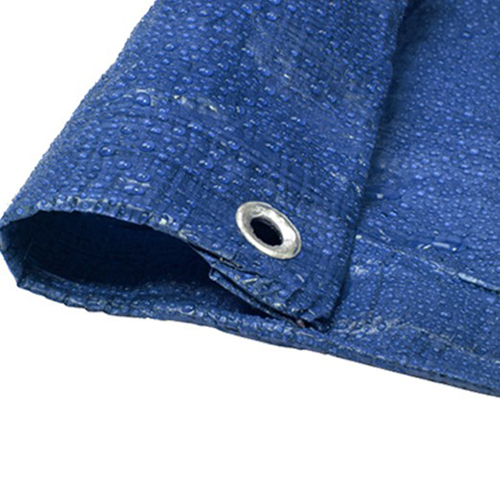How to Buy the Perfect Blue Tarp

Blue tarps, which are of light-duty polyethylene, are low grade, affordable covers with multiple short-term applications. They are waterproof, not easy to tear, and resistant to the effects of UV rays, acid, and mildew. You can use them as covers for your car, motorcycle, boat, machinery, products, woodpile, and more. Additionally, blue tarps are suitable for making tents, to cover damaged roofs, as temporary awnings, and so on.
While you can find plenty of uses for them for private and commercial purposes, they are not very durable and generally have a limited service life. However, you can extend it to the maximum by using them only for jobs they can handle. It will also help if you consider several blue tarp features and make your purchase according to what will best suit your purpose.
How to Buy the Perfect Blue Tarp
If you want a blue tarp to use around your place, here’s how you can buy the perfect blue tarp:
Get a Blue Tarp of the Right Size
Before buying a blue tarp, be clear about why you need it. Is it to serve as a vehicle cover? Or, to cover a roof? Do you want to erect a makeshift shelter? From the purpose, you can determine the size. There are different sized tarps for different needs. For instance, if you need a blue tarp to cover your car, you will want one that is large enough to fit over it. At the same time, you do not want it to be so large that there is excess material left that is difficult to manage.
Fortunately, you can get a blue tarp in the exact dimensions you require. If it is for your car, take the vehicle’s measurements and add a couple of inches to them. You can then shop for a tarp of that size. Since most retailers stock tarps in different sizes, finding the right one should not be hard.
Find a Blue Tarp of the Right Thickness
Tarps are available in a range of thicknesses. You can get lightweight ones of 5 to 8 mils as well as heavier ones that are of 16 to 24 mils. As with size, you will need to consider your purpose when selecting a blue tarp. A thicker tarp will be more durable and better suited for prolonged outdoor use, but it will also be bulky and heavy. While it will be resistant to tearing, you might find it difficult to transport around. So, if you select a thicker tarp, it will be better if it is for purposes that will not require you to haul it around.
It might be best to go with a lightweight tarp if you foresee having to move it frequently to different locations.
Check That the Blue Tarp has the Right Durability
If you are going to use the blue tarp outdoors, you need to make sure that it is durable enough to withstand the constant exposure to the elements. Look for one that is UV resistant and will not deteriorate too soon from being exposed to long hours of harsh sunlight. Some tarps may have undergone a fire retardant treatment to ensure they will not catch fire easily.
You also want a blue tarp that can resist the growth of mold and mildew to provide better protection to the things it is covering and to prevent health problems. Additionally, the tarp should also be waterproof and tear-resistant to minimize the risk of leakage.
It will also help to make sure that the blue tarp as reinforced stitching on the corners or the sides to provide extra protection. Furthermore, you want it to have brass grommets at close intervals on the outer edge. These grommets make it easier to tie down the tarp with a rope when you want to cover something securely, and they will be durable and more long-lasting if they are of brass.
Hopefully, with these suggestions, you will be able to pick the perfect blue tarp for your purpose. When you are not using it, be sure to fold and store it in a dry area indoors. It will last longer then and give you more value for your money.
